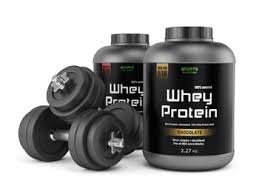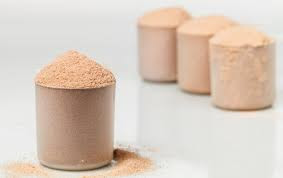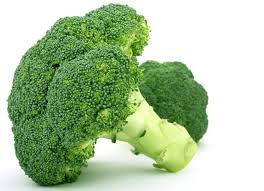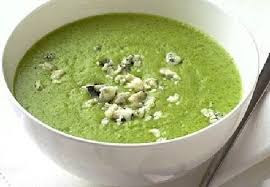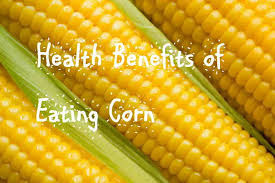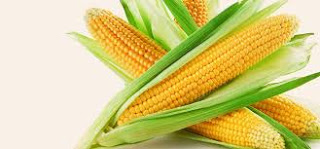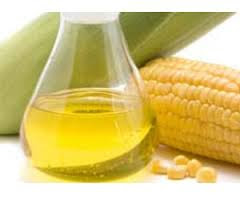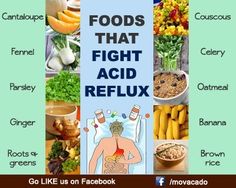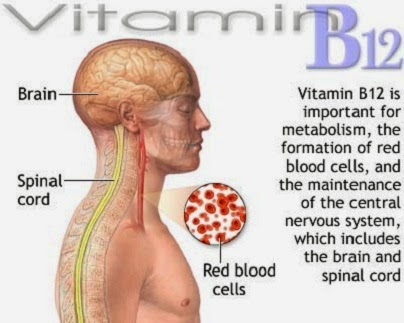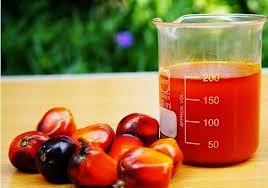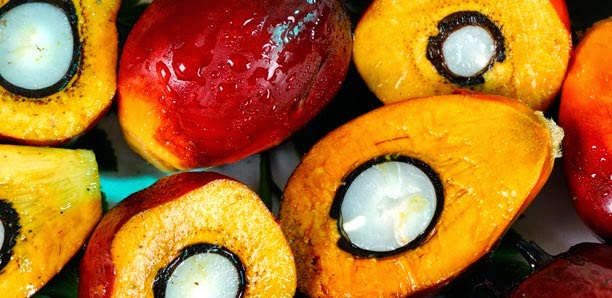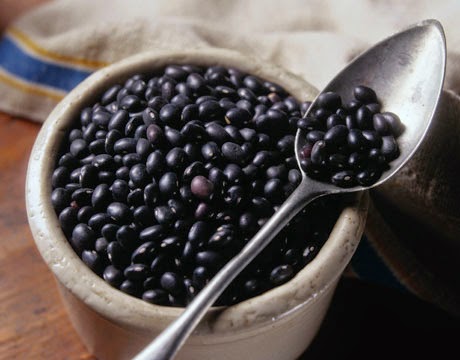Hormonal fluctuations can affect the body’s ability to maintain stable blood sugar levels, so reducing sugar intake is a major component to weight loss and maintenance. But an all-or-nothing approach is not the way to go when it comes to the sweet stuff, says Gibbs. While the women in her study who reduced their sugar intake lost the most weight, and had maintained that loss 4 years after the study began, she’s quick to say that these women reduced their sugar intake—they didn’t eliminate it altogether, which is a tough habit to keep up with (and can lead to binges). Refined sugars, like those in cookies and cakes, are the ones you should reduce. Keep the natural sugars that are found in fruit as your main source of sweetness.
Health
I recently knew two people that suffered from kidney stones. They were in agonizing pain. So I decided to look into it a bit.
What are the functions of the kidneys? The kidneys filter the blood to remove excess mineral salts and other dissolvable wastes. The kidneys also produce the urine that dissolves these wastes and excretes them through the urinary tract. Kidney stones form when the urine becomes so saturated with certain minerals that no more of it can dissolve into the urine (like trying to dissolve too much sugar in your iced tea). The undissolved portion of the minerals form crystals that then clump together and grow into hard stones. Kidney stones usually develop in the kidneys. However they can form anywhere in the urinary tract. This condition is medically known as urolithiasis or nephrolithiasis.
When kidney stones are small, they may pass unnoticed with the urine. Sometimes, they grow too large to pass easily through the urinary tract, and some stones have rough or sharp edges. When these stones are passing through the urinary tract, it can cause pain. In some cases, kidney stones cannot pass on their own, and treatment with specialized medical equipment, dietary adjustments or surgery may be necessary.
For most people, kidney stones can recurr. Therefore, a major part of the treatment for this condition is aimed at preventing recurrences. There are various types of kidney stones. Because treatment for each differs, it is important for the professional to determine the stone’s mineral content and to identify any medical conditions that may have contributed to stone formation. Preventive treatment may be with medications and/or changes in the diet.
About 80% of all kidney stones are composed of calcium and other minerals, usually a combination of calcium and oxalate. In some cases dietary adjustments help to prevent the recurrence of these types of stones.
How does diet affect the risk of developing kidney stones?
Kidney stones can form when substances in the urine—such as calcium, oxalate, and phosphorus—become highly concentrated. The body uses food for energy and tissue repair. After the body uses what it needs, waste products in the bloodstream are carried to the kidneys and excreted as urine. Diet is one of several factors that can promote or inhibit kidney stone formation. Certain foods may promote stone formation in people who are susceptible, but scientists do not believe that eating any specific food causes stones to form in people who are not susceptible. Other factors that affect kidney stone formation include genes, environment, body weight, and fluid intake.
The best way to prevent kidney stones is to make sure you drink plenty of water each day to avoid becoming dehydrated.
Keeping your urine diluted helps to stop waste products getting too concentrated and forming stones.
One can tell how diluted their urine is by looking at its colour. The darker your urine is, the more concentrated it is.
Your urine is usually a dark yellow colour in the morning because it contains a build-up of waste products that your body has produced overnight.
Drinks such as tea, coffee and fruit juice can count towards your fluid intake, but water is the healthiest option and is best for preventing kidney stones developing.
You should also make sure you drink more when it’s hot or when you’re exercising, to replenish fluids lost through sweating.
.
Diet
If your kidney stone is caused by too much calcium crystals, you are advised to reduce the amount of oxalates in your diet.
Oxalates prevent calcium being absorbed by your body, and can accumulate in your kidney to form stones.
Foods that contain oxalates include:
*beetroot
*asparagus
Arhubarb
*chocolate
*berries
*leeks
*parsley
*celery
*almonds, peanuts and cashew nuts
*soy products
*grains, such as oatmeal, wheat germ and wholewheat
*Garden eggs (although in small amount)
Don’t reduce the amount of calcium in your diet unless your dietitian advises you to. This is because calcium is very important for maintaining healthy bones and teeth.
To avoid developing a uric acid stone, you should reduce the amount of meat, poultry and fish in your diet. You may also be prescribed medication to change the levels of acid or alkaline in your urine.
(adsbygoogle = window.adsbygoogle || []).push({});
How does animal protein in the diet affect kidney stone formation?
Meat and other animal protein—such as eggs and fish—contain purines, which break down into uric acid in the urine. Foods especially rich in purines include organ meat, such as liver. People who form uric acid stones should limit their meat consumption to 600 grams each day.
Animal protein may also raise the risk of calcium stones by increasing the excretion of calcium and reducing the excretion of citrate into the urine. Citrate prevents kidney stones, but the acid in animal protein reduces the citrate in urine.
How does calcium in the diet affect kidney stone formation?
Calcium from food does not increase the risk of calcium oxalate stones. Calcium in the digestive tract binds to oxalate from food and keeps it from entering the blood, and then the urinary tract, where it can form stones. People who form calcium oxalate stones should include 800 mg of calcium in their diet every day, not only for kidney stone prevention but also to maintain bone density. A cup of low-fat milk contains 300 mg of calcium. Other dairy products such as yogurt are also high in calcium. For people who have lactose intolerance and must avoid dairy products, products such as orange juice fortified with calcium or dairy with reduced lactose content may be alternatives. Calcium supplements may increase the risk of calcium oxalate stones if they are not taken with food.
How does oxalate in the diet affect kidney stone formation?
Some of the oxalate in urine is made by the body. However, eating certain foods with high levels of oxalate can increase the amount of oxalate in the urine thereby increasing risk of kidney stone formation, where it combines with calcium to form calcium oxalate stones.
Eat fewer oxalate-rich foods. If you tend to form calcium oxalate stones, it is recommended that you restrict foods rich in oxalates. These include rhubarb, beets, okra, garden eggs, spinach, Swiss chard, sweet potatoes, nuts, tea, chocolate and soy products.
Choose a diet low in salt and animal protein. Reduce the amount of salt you eat and choose nonanimal protein sources, such as legumes. Consider using a salt substitute.
Continue eating calcium-rich foods, but use caution with calcium supplements. Calcium in food doesn’t have an effect on your risk of kidney stones. Continue eating calcium-rich foods unless your dietitian advises otherwise. Ask your doctor before taking calcium supplements, as these have been linked to increased risk of kidney stones. You may reduce the risk by taking supplements with meals. Diets low in calcium can increase kidney stone formation in some people.
Ask a doctor to refer you to a dietitian who can help you develop an eating plan that reduces your risk of kidney stones.
Medications
Medications can control the amount of minerals and acid in your urine and may be helpful in people who form certain kinds of stones. The type of medication your doctor prescribes will depend on the kind of kidney stones you have. Here are some examples:
Calcium stones. To help prevent calcium stones from forming, your doctor may prescribe a thiazide diuretic or a phosphate-containing preparation.
Uric acid stones. Your doctor may prescribe allopurinol (Zyloprim, Aloprim) to reduce uric acid levels in your blood and urine and a medicine to keep your urine alkaline. In some cases, allopurinol and an alkalizing agent may dissolve the uric acid stones.
Struvite stones. To prevent struvite stones, your doctor may recommend strategies to keep your urine free of bacteria that cause infection. Long-term use of antibiotics in small doses may help achieve this goal. For instance, your doctor may recommend an antibiotic before and for a while after surgery to treat your kidney stones.
Cystine stones. Cystine stones can be difficult to treat. Your doctor may recommend that you drink more fluids so that you produce a lot more urine. If that alone doesn’t help, your doctor may also prescribe a medication that decreases the amount of cystine in your urine.
It is very important that a person with kidney stones to see a dietitian. Dietary adjustments go a long way to not only treat but prevent recurrences and rejuvenate the kidneys.
God bless and heal you and happy birthday to me!!
What is Casein Protein?
Derived from milk, like whey protein, casein is a naturally more abundant source of branched-chain amino acids . I guess that’s why it’s sometimes simply called “milk protein,” since around 80 percent of the protein found in cow’s milk is casein — and it also makes up 20 to 40% of human breast milk. It’s also abundant in raw sheep cheese, a pure source of casein.
Casein, like whey and other protein foods , is made up of various “building blocks” called essential and non-essential amino acids. The human body is able to make certain amino acids on its own (called non-essential) while others it cannot (called essential), making the essential kinds crucial to get through the foods you eat. Since plant foods don’t always provide the complete set of essential amino acids we need, animal foods — and sometimes convenient protein powders — are one way people make sure they cover their protein bases.
Casein protein powder is created in a lab from dehydrating parts of milk — the problem is that many forms are denatured and isolated, and may cause health issues. It is advisable to find casein protein that is from A2 beta-casein rather than A1 casein (see “Different Types of Casein Protein” below). You can usually find it in most good fitness and might come across a variety of flavors. What you’ll probably notice is that for every brand of casein protein powder available, about five different whey protein powders are also sold.
So what are the benefits of casein-protein?
LONGER LASTING:
Not all proteins are created equal. Whether it’s soy, egg, whey, animal, or casein protein, they all have their own unique advantages. Arguably, casein’s greatest strength is timing. Casein has the ability to provide your bloodstream with a slow and steady flow of amino acids that could last for hours. Muscles may not be built overnight, but drinking a glass of casein-rich milk is the ideal protein to consume right before bed, as it’ll be more helpful throughout the night than any other protein option.
GREATER GAINS
Want to build massive muscles quicker?
According to a Texas study , casein may be an important ingredient to this. Researchers took 36 males performing
heavy resistance training and found that the group consuming a whey and casein combination significantly outperformed participants who were given a combination of whey, BCAAs, and glutamine supplement. Over the course of the 10-week study, the whey and casein combination yielded the greatest increases in lean, fat-free mass. Why take only one form of protein when a combination yields much better results?
FAT LOSS:
Want to improve chances of muscle growth and fat loss? If so, you might be interested to know that a study conducted in the Netherlands found that by multiplying casein intake by two and a half times, participants were able to have a higher metabolic rate while sleeping and a better overall fat balance. Also of note is that satiety levels were 33% higher. In other words, by taking casein you’ll not only be increasing fat loss , but you’ll do so on a fuller stomach.
GREATER STRENGTH:
Ask any guy what his workout goals are and increased strength is almost always on the wish list. Often, to help get there quicker, people supplement using whey protein. In a Massachusetts study , researchers found that casein actually doubled the effect that whey protein had on legs, chest, and shoulder strength results. Researchers believe the reason for the significant difference was because of casein’s well-known anti-catabolic abilities. The next time you’re thinking of having a late-night snack, make it a casein shake.
DENTAL PROTECTION:
What makes you cringe more: The thought of the dental chair or the accompanying invoice? According to a study conducted in the United Kingdom, one way to help prevent a more expensive dental visit might be to consume casein. Their research found that casein proteins have the potential to reduce or prevent the effects of enamel erosion. So if you drink a lot of fruit juices, sweeteners or sugary substances, or just can’t kick the soft drink habit, at least consider protecting your teeth by adding some casein protein to your diet.
FOODS HIGH IN CASEIN:
While you can get casein from casein supplements you can also get a substantial amount from food sources. Casein is highest in dairy products like milk, cheese, cream, and yogurt and generally diary derivatives. Casein is also found in some fish like tuna, although in much smaller quantities than dairy products.
CASEIN CONTENT IN MILK:
Milk is one of the highest sources of casein available as roughly 80% of milk proteins are casein. So if you drink an 800mls glass of milk that has roughly 12 grams of protein, you get about 9.6 grams of casein based proteins. That is quite a lot!
WHAT ARE CASEIN HYDROLYSATE AND MICELLAR CASEIN?
MICELLAR CASEIN:
Micellar casein is the least adulterated form of supplemental casein. It is left in its “intact” molecular structure. This is important as it then is digested in a series of enzymatic and nonenzymatic processes in the body to encourage slow breakdown and absorption by the body.
HYDROLYZED CASEIN:
Hydrolyzed casein is simply micellar casein that has been broken down into smaller peptides by “hydrolyzing” the bonds. This process occurs just like it does in whey where it can be broken down using enzymes or acids. If you decide to go with hydrolyzed casein for some of the reasons we mention below, definitely go with the hydrolyzed as the acid makes it incredibly bitter.
Typically, hydrolyzed casein will be substantially more expensive than micellar casein due to the processing and extra steps in manufacturing. There doesn’t appear to be any magical properties of hydrolyzed casein over hydrolyzed whey. The magic of casein lies in the micellar form so speaking honestly, if you want something hydrolyzed go with a hydrolyzed whey.
Casein AND Whey
Although it might not fly off shelves quite as quickly as whey, casein protein is actually very similar to whey in more ways than one. Like whey, casein protein comes from dairy and is actually the primary protein found in cow’s milk. Unlike whey protein, however, it digests slower due to a complex interaction with stomach acids. This results in a slower release of essential proteins and amino acids, which makes casein the preferred supplement in situations when a slow release of nutrients is beneficial (like before bed when you’re going 7-10 hours without food).
This same benefit is also thought to make casein protein a less optimal supplement post-workout (when you want nutrients quickly). However, research indicates this might not be as big of a deal as we thought. In many cases, whey and casein can be interchangeable , St. Pierre says. “Honestly, it’s pretty much an equal substitute. The research that compares whey to caseins post-workout is equivocal,” he says. You can stock up on both. But, according to St. Pierre, “Your total protein intake far outweighs anything else.” While that total amount will vary from person to person, the experts at Precision Nutrition recommend taking in 0.6-0.9 grams per pound of bodyweight depending on activity levels (more active individuals need more protein).
Casein Protein vs. Whey Protein
For athletes, or really anyone who’s pretty active, protein is an important piece of the puzzle when it comes to muscle recovery, repairment and growth. While most people living in developed nations are far from suffering a protein deficiency, keep in mind that protein requirements increase the more active you become, and they’re especially high when you regularly lift weights or do other types of lengthy training.
While you might think that protein powders are only for serious lifters, bulky men or pro athletes, nearly everyone can benefit from supplementing workouts with the right mix of nutrients — and protein powders simply make this easier to do.
Whey protein and casein protein also differ in terms of their bioavailability and effects on muscle synthesis. Although whey protein has many of the same benefits, it’s believed to cause more of a fast “amino acid spike” compared to casein. When the body is flooded with more protein that it can use at one time, it’s possible for some to be flushed out through urine, oxidized or generally wasted.
However, this isn’t always a bad thing — different types of proteins have their upsides — so don’t go writing off whey protein just yet. There are certainly benefits to consuming both faster- and slower-releasing proteins; it really just comes down to your goals and schedule.
At the molecular level, within a protein source like casein various amino acids are branched together. Casein protein has a lower percentage of branched-chain amino acid compared to whey protein, which is one reason it’s slower to digest and also tends to work for longer. Because of its utilization and timing, casein increases protein synthesis a bit less than whey does.
On the plus side, it better stops the body from breaking down amino acids it already has available within your muscles. Whey protein also has more sulfur than casein, which can also change the way the body uses it. Compared to casein, whey is a fast protein source, which means it provides amino acids quickly after ingestion — however they also leave the body sooner than when you consume casein.
In theory, the two should work differently to affect body composition, however not every study has shown this to be true. For example, researchers from the Metabolism Unit at the University of Texas Medical Branch found that short-term ingestion of both whey and casein after exercise resulted in similar increases in muscle protein net balance. They didn’t actually result in differences in muscle protein synthesis despite different patterns of blood amino acid responses.
If all of this chemistry seems a bit confusing, here’s the bottom line on casein vs. whey. Both casein and whey protein can supplement your workouts well and include all the essential amino acids you need, but whey has more branched-chain amino acids and, therefore, might be slightly better at facilitating muscle protein synthesis.
The good news is this: After comparing the effects of both proteins on body composition and performance in female athletes, researchers from the Exercise and Performance Nutrition Laboratory at the University of South Florida found that whey and casein had similar positive effects. Females were found to experience benefits using both supplements, including an increase in performance markers from consuming protein after resistance training and a decreased body fat composition.
SOURCES:
https://www.muscleandstrength.com/expert-guides/casein-protein
http://dailyburn.com/life/health/best-protein-powder-whey-casein-vegan/
http://www.mensfitness.com/nutrition/supplements/5-benefits-of-casein-protein
While at the gym last Friday I encountered a young man who had heard plenty about the effect of whey proteins in muscle building. He asked me to affirm and I told him the much I could. It struck me then that plenty people don’t know much about whey and it’s health benefits. Where is whey contained and what does it do for you?. Milk is made of two proteins, casein and whey and right here we are going to focus on whey. Casein would come later. Whey protein can be separated from the casein in milk or formed as a by-product of cheese making.
Whey protein is considered a complete protein and contains all 9 essential amino acids and is low in lactose content. People commonly use it as a supplement, alongside resistance exercise, to help improve muscle protein synthesis and promote the growth of lean tissue mass.
Whey protein is a mixture of the following:
*Beta-lactoglobulin
*Alpha-lactalbumin
*Bovine serum albumin
*Immunoglobins.
Whey Protein Types:
There are three primary types of whey protein :
Whey protein concentrate (WPC),
Whey protein isolate (WPI), and
Whey protein hydrolysate (WPH).
Whey protein concentrate : WPC contains low levels of fat and low levels of carbohydrates (lactose). The percentage of protein in WPC depends on how concentrated it is. Lower end concentrates tend to have 30% protein and higher end up to 90%
Whey protein isolate: WPIs are further processed to remove all the fat and lactose. WPI is usually at least 90% protein
Whey protein hydrolysate: WPH is considered to be the “predigested” form of whey protein as it has already undergone partial hydrolysis – a process necessary for the body to absorb protein. WPH doesn’t require as much digestion as the other two forms of whey protein. In addition, it is commonly used in medical protein supplements and infant formulas because of it’s improved digestibility and reduced allergen potential.
How is whey protein produced?
When milk is left over and coagulates, it eventually turns into a 5% solution of lactose in water, loaded with minerals. This leftover by-product, called whey, makes up 20% of the protein in milk, the other 80% is called casein (the curds in cottage cheese). The liquid whey is separated from the casein and sent through filters to remove all non-whey ingredients. It is then purified in a process called “ion exchange”.
The final step is removing the water from the whey by turning it into a powder at a drying tower. The protein powder is then ready to be packaged and consumed.
Possible Health Benefits of Whey Protein
There are many benefits associated with the consumption of whey protein, and researchers are constantly finding new possible therapeutic properties. Please Note that many of these potential benefits are based on single studies and more evidence is required before making definitive judgement.
Whey Protein Promotes Muscle Growth
Muscle mass naturally declines with age. This usually leads to fat gain and raises the risk of many chronic diseases associated with obessity including high blood pressure and diabetes. However, this adverse change in body composition can be partly slowed, prevented, or reversed with a combination of proper exercise and adequate diet. Strength training coupled with the consumption of high-protein foods or protein supplements has been shown to be an effective preventive strategy. Particularly effective are high-quality protein sources, such as whey, which is rich in a branched-chain amino acid called leucine which is the most growth-promoting (anabolic) of the amino acids.
For this reason, whey protein is effective for the prevention of age-related muscle loss, as well as for improved strength and a better-looking body. Whey protein has been shown to be slightly better compared to other types of protein, such as casein or soy.
Lowering Cholesterol
According to a study published in The British Journal of Nutrition, “there was a significant decrease in total cholesterol and LDL cholesterol at week 12 in the whey group compared with the casein (group).”
Asthma
Whey protein could improve immune response in children with asthma. A study published in the International Journal of Food Science and Nutrition, found that children with asthma who were supplemented with whey for one month had an improved cytokine response.
Whey Protein May Lower Blood Pressure
Abnormally high blood pressure (hypertension) is one of the leading risk factors for heart disease and numerous studies have linked the consumption of dairy products with reduced blood pressure. This effect could been attributed to a family of bioactive peptides in milk, so-called “angiotensin-converting-enzyme inhibitors” (ACE-inhibitors). In whey proteins, the ACE-inhibitors are called lactokinins. Several animal studies have demonstrated their beneficial effects on blood pressure.
A limited number of human studies have investigated the effect of whey proteins on blood pressure anyway, and many experts consider the evidence to be inconclusive. One study in overweight individuals showed that whey protein supplementation, 54 g/day for 12 weeks, lowered systolic blood pressure by 4%. Casein has similar effects .
(adsbygoogle = window.adsbygoogle || []).push({});
Whey Protein May Enhance the Body’s Antioxidant Defenses
Antioxidants are substances that act against oxidation in the body, reducing oxidative stress and cutting the risk of various chronic diseases. One of the most important antioxidants in humans is glutathione.
Unlike most antioxidants we get from the diet, glutathione is produced by the body. In the body, glutathione production depends on the supply of several amino acids, such as cysteine, which is sometimes of limited supply. For this reason, high-cysteine foods, such as whey protein, may boost the body’s natural antioxidant defenses . A number of studies in both humans and rodents have discovered that whey proteins may reduce oxidative stress and increase levels of glutathione
Whey Protein is Highly Satiating (Filling), Which May Help Reduce Hunger and Aid Weight Loss.
Satiety is a term used to describe the feeling of fullness we experience after eating a meal. It is the opposite of appetite and hunger, and should suppress cravings for food and the desire to eat. Some foods are more satiating than others, an effect which is partly mediated by their macronutrient (protein, carb, fat) composition of which protein is by far the most filling of the three. However, not all proteins have the same effect on satiety. Whey protein appears to be more satiating than other types of protein, such as casein and soy.
These properties make it particularly useful for those who need to eat fewer calories and lose weight.
A study published in the journal Clinical and Investigative Medicine1 found that whey protein may help reduce weight loss among HIV-positive patients.
Recent developments on whey protein:
The beneficial effects of whey on diabetes and cardiovascular disease risk factors in obese adults
New evidence shores up findings that whey protein, which is found in milk and cheese, could have health benefits for people who are obese and do not yet have diabetes. The study, which appears in ACS’ Journal of Proteome Research, examined how different protein sources affect metabolism.
*Whey protein consumption may lead to significant decreases in body weight and body fat and significant increases in lean body mass .
*Research published in the March/April 2014 issue of the Journal of the American College of Nutrition showed that whey protein, either as a supplement combined with resistance exercise or as part of a weight-loss or weight-maintenance diet, may provide men and women benefits related to body composition.
*Researchers from Tel Aviv University have suggested that consuming whey protein before meals may reduce blood sugar spikes. Specifically, they state that a whey protein drink before breakfast can help control erratic glucose levels associated with type 2 diabetes.
Whey Protein Risks?
Generally, most of the complications associated with whey protein intake have to do with digestive issues, such as bloating, headaches, cramps and fatigue. None of these are generally considered life-threatening, more so than annoying complications. Most of the literature has shown that if you’re experiencing any of have these symptoms, they are most likely due to either the lactose (found more in Whey Protein Concentrate) or sweeteners used more so than the whey protein itself. With that said, there are different methods of whey production, such as ion-exchanged that can influence how well your body can utilize the protein, leading to improper digestion of the whey itself.
The biggest fear often expressed about whey protein intake is that too much protein is “bad for the kidneys.” Research though has shown this is not true at all in healthy individuals. For those with known kidney disease, high protein diets can exacerbate pre-existing conditions. Healthy individuals, without any underlying or unknown kidney disease have nothing to worry about with higher intakes of protein. What does occur with higher protein intakes is your body adapts to the increase in protein by increasing glomerular filtration rates (which means more fluid passes by your kidneys and there’s an increase in urine production).
Sources:
https://draxe.com/casein-protein/
https://authoritynutrition.com/10-health-benefits-of-whey-protein/
http://www.builtlean.com/2012/03/16/whey-protein/
http://www.medicalnewstoday.com/articles/263371.php?page=2
I had cause to encounter this spongy vegetable recently. Well, I had seen it a lot in the movies and it didn’t leave a good impression. Managed to see it in a vegetable market in Jos and bought it. Funny enough it tasted quite pleasant and rich!.. I went ahead to find out its health benefits and here’s what I found.. Enjoy!
Improving bone health:
Poor vitamin K intake is linked with a high risk of bone fracture. Just one cup of chopped broccoli provides 92 micrograms of vitamin K, well over 100% of your daily need. Consuming an adequate amount of vitamin K daily, improves bone health by improving calcium absorption and reducing urinary excretion of calcium. Broccoli also contributes to your daily need for calcium, providing 43 milligrams in one cup. Antioxidant vitamin C, when eaten in its natural form (in fresh produce as opposed to supplement form) can help to fight skin damage caused by the sun and pollution, reduce wrinkles and improve overall skin texture.
Protection from chronic disease:
According to theDepartment of Internal Medicine and Nutritional Sciences Program of the University of Kentucky, high fiber intakes are associated with significantly lower risks of developingcoronary heart disease, stroke, hypertension, diabetes, obesity, and certain gastrointestinal diseases.
Increased fiber intake has also been shown to lower blood pressure and cholesterol levels, improve. insulin sensitivity, and enhance weight loss for obese individuals.
Fighting cancer:
Eating a high amount of cruciferous vegetables has been associated with a lower risk of cancer; namely lung andcolon cancer. Studies have suggested that sulforaphane, the sulfur-containing compound that gives cruciferous vegetables their bitter bite, is also what gives them their cancer-fighting power. Researchers have found that sulforaphane can inhibit the enzyme histone deacetylase (HDAC), known to be involved in the progression of cancer cells. The ability to stop HDAC enzymes could make sulforaphane-containing foods a potentially powerful part of cancer treatment in the future. Sulforaphane is now being studied for its ability to delay or impede cancer with promising results shown inmelanoma, esophageal, prostate andpancreatic cancers.Another important vitamin that broccoli contains,folate, has been shown to decrease the risk of breast cancer in women. Adequate intake of dietary folate (in food) has also shown promise in protecting against colon, stomach, pancreatic and cervical cancers. Although the mechanism of protection is currently unknown, researchers believe that folate’s protective effects have something to do with its role in DNA and RNA production and the prevention of unwanted mutations. There is no evidence that folate in supplement form provides the same anti-cancer benefits.
Broccoli’s Anti-Inflammatory Benefits:
When threatened with dangerous levels of potential toxins, or dangerous numbers of overly-reactive, oxygen-containing molecules, signals are sent within our body to our inflammatory system, directing it to “kick in” and help protect our body from potential damage. One key signaling device is a molecule called Nf-kappaB. When faced with the type of dangers described above, the NF-kappaB signaling system is used to “rev up” our inflammatory response and increase production of inflammatory components (for example, IL-6, IL-1beta, TNF-alpha, iNOS and COX-2). This process works beautifully in temporary, short-term circumstances when healing from injury is required. When it continues indefinitely at a constant pace, however, it can put us at risk for serious health problems, including the development of cancer.
Research studies have made it clear that the NF-kappaB signaling system that is used to “rev up” our inflammatory response can be significantly suppressed by isothiocyanates (ITCs). ITCs—the compounds made from glucosinolates found in broccoli and other cruciferous vegetables—actually help to shut down the genetic machinery used to produce NF-kappaB and other components of the inflammatory system. These anti-inflammatory benefits of ITCs have been demonstrated in the laboratory, and with consumption of the ITCs themselves. While they have yet to be demonstrated on consumption of broccoli in an everyday diet, we fully expect future research to show anti-inflammatory benefits from the routine consumption of broccoli (and its glucosinolates), not just from consumption of ITCs.
As mentioned earlier in this section, chronic inflammation can sometimes get triggered by overexposure to allergy-related substances. In this context, broccoli has yet another anti-inflammatory trick up its sleeve, because it is a rich source of one particular phytonutrient (a flavonol) called kaempferol. Especially inside of our digestive tract, kaempferol has the ability to lessen the impact of allergy-related substances (by lowering the immune system’s production of IgE-antibodies). By lessening the impact of allergy-related substances, the kaempferol in broccoli can help lower our risk of chronic inflammation.
Broccoli’s Antioxidant Benefits:
Amongst all of the commonly consumed cruciferous vegetables, broccoli stands out as the most concentrated source of a premiere antioxidant nutrient—vitamin C. This central antioxidant vitamin can provide longer-term support of oxygen metabolism in the body if it is accompanied by flavonoids that allow it to recycle. Broccoli provides many such flavonoids in significant amounts, including the flavonoids kaempferol and quercitin. Also concentrated in broccoli are the carotenoids lutein, zeaxanthin, and beta-carotene. All three of these carotenoids function as key antioxidants. In the case of lutein and beta-carotene, broccoli has been shown not only to provide significant amounts of these antioxidants but to significantly increase their blood levels when consumed in the amount of three cups. Other antioxidants provided by broccoli in beneficial amounts include vitamin E and the minerals manganese and zinc.
Considered as a group, the vitamins, minerals, flavonoids, and carotenoids contained in broccoli work to lower risk of oxidative stress in the body. The ability of these nutrients to support oxygen metabolism and avoid excess formation of overly reactive, oxygen-containing molecules makes them equally helpful in lowering risk of chronic inflammation and risk of cancer. If cancer development is compared to a 3-legged stool, the antioxidant benefits of broccoli can be viewed as weakening one leg of the stool, namely the leg called “oxidative stress.” We’ve already seen how the glucosinolates and omega-3 fats in broccoli can be viewed as helping to weaken a second leg of the stool (chronic inflammation).
Enhancing Detoxification:
Most toxins that pose a risk to our cells must be detoxified in our body by a 2-step process. What’s remarkable about broccoli is its ability to alter activity in both of these two detox steps. Isothiocyanates (ITCs) made from the glucosinolates in broccoli are well-documented modifiers of the first step in detoxification (called Phase I). In fact, some ITCs like sulforaphane can actually help shut down the genetic machinery that produces certain Phase I enzymes. ITCs are equally capable of altering the activity of enzymes involved in the second step of detoxification (called Phase II). From research in the field of genetics, we know that ITCs can help bridge gaps in Phase II activity when it is insufficient. Taken in combination, the impact of ITCs on Phase I and II detox events is unique—and equally unique is the presence of glucosinolate compounds in broccoli that can be used to make ITCs. Glucosinolates like glucoraphanin, gluconasturtiian, and glucobrassicin are simply not found in other foods in the same combination and concentration that is offered by broccoli. By helping to promote as well as regulate detox activity in our cells, the ITCs made from broccoli can help prevent insufficient detoxification of dangerous substances that threaten our cells.
Broccoli has a strong, positive impact on our body’s detoxification system, and researchers have recently identified one of the key reasons for this detox benefit. Glucoraphanin, gluconasturtiian, and glucobrassicin are 3 glucosinolate phytonutrients found in a special combination in broccoli. This dynamic trio is able to support all steps in body’s detox process, including activation, neutralization, and elimination of unwanted contaminants. Isothiocyanates (ITCs) are the detox-regulating molecules made from broccoli’s glucosinolates, and they help control the detox process at a genetic level.
Broccoli and Digestive Support
The digestive support provided by broccoli falls into two basic categories: fiber support, and ITC (isothiocyanate) support. At approximately 1 gram of dietary fiber for every 10 calories, you don’t have to eat much broccoli to get a large amount of your daily requirement! For 100 calories—only 5% of a 2,000-calorie diet—you get about 10 grams of fiber, or 40% of the Daily Value (DV). And, 250 calories of broccoli (about 12% of a 2,000-calorie diet) will give you the full daily requirement for this important nutrient! Few components of food support our digestive system as well as fiber. The speed that food travels through us, the consistency of food as it moves through our intestine, and bacterial populations in our intestine are all supported as well as regulated by dietary fiber.
Alongside of broccoli’s dietary fibers are its glucosinolates. These phytonutrients are converted by our bodies into isothiocyanates (ITCs). ITCs—and particularly sulforaphane—help protect the health of our stomach lining by helping prevent bacterial overgrowth of Helicobacter pylori or too much clinging by this bacterium to our stomach wall. Broccoli sprouts appear to have especially strong stomach support properties in this regard.
Broccoli and Cardiovascular Support
Although research in this area is still in the early stages, anti-inflammatory substances found in cruciferous vegetables are becoming the topic of increasing interest with respect to heart disease. One particular focus here involves the anti-inflammatory properties of sulforaphane, one of the isothiocyanates (ITCs) derived from the glucoraphanin in broccoli. In some individuals susceptible to high blood sugar, sulforaphane may be able to prevent (or even reverse) some of the damage to blood vessel linings that can be cause by chronic blood sugar problems. Decreased risk of heart attacks and strokes may also eventually be linked in a statistically significant way to intake of broccoli and its glucoraphanin.
(adsbygoogle = window.adsbygoogle || []).push({});
A second area you can count on broccoli for cardiovascular support involves its cholesterol-lowering ability. Our liver uses cholesterol as a basic building block to product bile acids. Bile acids are specialized molecules that aid in the digestion and absorption of fat through a process called emulsification. These molecules are typically stored in fluid form in our gall bladder, and when we eat a fat-containing meal, they get released into the intestine where they help ready the fat for interaction with enzymes and eventual absorption up into the body. When we eat broccoli, fiber-related nutrients in this cruciferous vegetable bind together with some of the bile acids in the intestine in such a way that they simply stay inside the intestine and pass out of our body in a bowel movement, rather than getting absorbed along with the fat they have emulsified. When this happens, our liver needs to replace the lost bile acids by drawing upon our existing supply of cholesterol, and as a result, our cholesterol level drops down. Broccoli provides us with this cholesterol-lowering benefit whether it is raw or cooked. However, a recent study has shown that the cholesterol-lowering ability of raw broccoli improves significantly when it is steamed. In fact, when the cholesterol-lowering ability of steamed broccoli was compared with the cholesterol-lowering ability of the prescription drug cholestyramine (a medication that is taken for the purpose of lowering cholesterol), broccoli bound 33% as many bile acids (based on a standard of comparison involving total dietary fiber).
The B-complex vitamins in broccoli can also make a major contribution to our cardiovascular health. Especially with respect to excessive formation of homocysteine—an event which raises our risk of atherosclerosis, stroke, and heart attack—B-complex vitamin deficiency intake can pose a major risk. Three B vitamins especially important for lowering our risk of hyperhomocysteinemia (excessive formation of homocysteine) are vitamin B6, vitamin B12, and folate. By making an important contribution to our B6 and folate intake, broccoli can help us lower our risk of excessive homocysteine formation and cardiovascular problems that are related to excess homocysteine.
Other Health Benefits Provided by Broccoli:
Three other areas of health benefits are important to mention when considering broccoli and its unique combination of nutrients. The first area is eye health. Two carotenoids found in significant concentrations in broccoli—lutein and zeaxanthin—play an especially important role in the health of the eye. In fact, no tissue in the body is more concentrated with lutein than the area in the outer portion of the retina (called the peripheral retina). Similarly, in the macula near the central portion of the retina, zeaxanthin is uniquely concentrated. Risk of problems involving the macula of the eye (for example, macular degeneration) and problems involving the lens area of the eye (for example, cataracts) have both been show to lessen with intake of foods (including broccoli) that provide significant amounts of the lutein and zeaxanthin carotenonids.
A second area is skin support, including support of sun-damaged skin. Here it is the glucoraphanin found in broccoli—converted into sulforaphane by the body—that has received the most research attention. Since skin cells can carry out the process of detoxification, it may be detox-related benefits of sulforaphane that are especially important in helping to counteract sun damage.
A third area of increasing research interest involves the metabolism of vitamin D. Broccoli is not a source of this vitamin, but it is an excellent source of vitamin K and also of vitamin A (in one of its precursor forms, beta-carotene). Many individuals have large vitamin D deficiencies that cannot be remedied through diet alone, and these deficiencies require sizable amounts of vitamin D to be provided through dietary supplementation. When large supplemental doses of vitamin D are needed to offset deficiency, ample supplies of vitamin K and vitamin A appear to help keep our vitamin D metabolism in the proper balance. Assuring adequate intake of vitamins K and A alongside of vitamin D supplementation may turn out to be important in achieving optimal vitamin D supplementation results and avoiding potential problems related to supplementation. Broccoli may turn out to play a particularly helpful role in balancing this set of events by providing its unusually strong combination of both vitamin A and vitamin K.
Broccoli as a “Goitrogenic” Food
Broccoli is sometimes referred to as a “goitrogenic” food. Yet, contrary to popular belief, according to the latest studies, foods themselves—broccoli included—are not “goitrogenic” in the sense of causing goiter whenever they are consumed, or even when they are consumed in excess. In fact, most foods that are commonly called “goitrogenic”—such as the cruciferous vegetables (including broccoli, kale, and cauliflower) and soyfoods—do not interfere with thyroid function in healthy persons even when they are consumed on a daily basis. Nor is it scientifically correct to say that foods “contain goitrogens,” at least not if you are thinking about goitrogens as a category of substances like proteins, carbohydrates, or vitamins. With respect to the health of our thyroid gland, all that can be contained in a food are nutrients that provide us with a variety of health benefits but which, under certain circumstances, can also interfere with thyroid function. The term “goitrogenic food” makes it sound as if something is wrong with the food, but that is simply not the case. What causes problems for certain individuals is not the food itself but the mismatched nature of certain substances within the food to their unique health circumstances.
Possible health risks of consuming broccoli
If you are taking blood-thinners such as Coumadin (warfarin), it is important that you do not suddenly begin to eat more or less foods containing vitamin K, which plays a large role in blood clotting.
It is the total diet or overall eating pattern that is most important in disease prevention and achieving good health. It is better to eat a diet with a variety than to concentrate on individual foods as the key to good health.
Some Sources:
Ambrosone CB, Tang L. Cruciferous vegetable intake and cancer prevention: role of nutrigenetics. Cancer Prev Res (Phila Pa). 2009 Apr;2(4):298-300. 2009.
Angeloni C, Leoncini E, Malaguti M, et al. Modulation of phase II enzymes by sulforaphane: implications for its cardioprotective potential. J Agric Food Chem. 2009 Jun 24;57(12):5615-22. 2009.
Banerjee S, Wang Z, Kong D, et al. 3,3′-Diindolylmethane enhances chemosensitivity of multiple chemotherapeutic agents in pancreatic cancer. 3,3′-Diindolylmethane enhances chemosensitivity of multiple chemotherapeutic agents in pancreatic cancer. 2009.
Bhattacharya A, Tang L, Li Y, et al. Inhibition of bladder cancer development by allyl isothiocyanate. Carcinogenesis. 2010 Feb;31(2):281-6. 2010.
http://articles.mercola.com/sites/articles/archive/2013/11/09/broccoli-benefits.aspx
(adsbygoogle = window.adsbygoogle || []).push({});
(adsbygoogle = window.adsbygoogle || []).push({});
(adsbygoogle = window.adsbygoogle || []).push({});
Whey is also rich in L-glutamine, a non-essential amino acid that is the precursor to gamma-aminobutyric acid (GABA), a substance that helps regulate thenervous systemand promote calmness. So if you are not allergic to milk-based foods, taking a high-quality whey protein supplement such as Proventive, One World Whey, or Jay Robb is a great way to boost your overall nutritional intake and feed your body the nutrients it needs to maintain a healthy, well-functioning nervous system.
2) Sweet potatoes, yams:
3) Bananas:
4) Green, herbal tea:
5) Dark chocolate,cacao;
“Chocolate contains a neurotransmitter known as anandamide that has the ability to alter dopamine levels in the brain, causing a sense of peace and relaxation.,” says Dr. Kristie Leong, M.D. “Chocolate is also rich in tryptophan, the precursor to the serotonin which appears to play a role in relieving stress and promoting a sense of calmness.”
7) Spinach:
The news making rounds now is that red palm oil is healthier than olive oil and coconut oil and has been proven to reverse the symptoms of heart disease and protect against certain cancers and this goes against everything I have learnt about the stuff. According to its ardent fans, red palm oil has been celebrated as a healing tonic among ancient civilizations, but has been overlooked by modern health practitioners due to its mistaken similarities to palm kernel oil. Both palm kernel and red palm oil originate from the oil palm Elaeis guineesis. But palm kernel oil is derived from the seed, while red palm oil is extracted from the fruit.
(adsbygoogle = window.adsbygoogle || []).push({});
Black beans (Akidi, according to the ibos) and other legumes are noted for their high protein content. Most people also know them for their gas production and heart burns, these are individual effects of consumption, there are overwhelming health benefits of black beans. Here are a few of them.
(adsbygoogle = window.adsbygoogle || []).push({});

